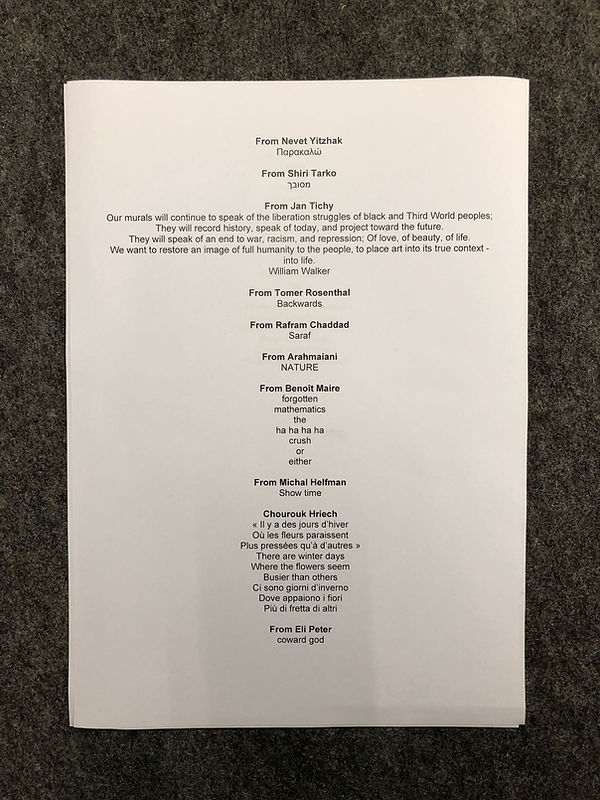
The proverbs written “It is better to have done good and died than to have lived and done nothing”
It is better to have done good and died than to have lived and done nothing, 2018
Mixed media (a fragment of a wall from a Thai Buddhist temple, two fragments of walls taken from a demolished building in Tel Aviv)
Dimension Approx. 60x70x20 cm
variable dimensions
Unique
In this work, the artist draws upon a chance encounter at a Buddhist temple, where fragments of old walls in the monastery garden were inscribed with proverbs and verses. These writings—ranging from moral precepts to folk wisdom and Buddhist doctrines—had been carefully placed upon the broken surfaces, allowing the ruins to become vessels of instruction.
The project resonates with the artist’s earlier work 2017, a wall painting of an internet-found text executed in disappearing ink. That piece gradually vanished over an indeterminate period of time, leaving behind only traces in memory. Here, the artist extends this interest in impermanence by bringing together wall fragments from different contexts: one from the temple and another sourced locally. Placed side by side, leveled and painted white, these fragments form a single surface for inscriptions.
Words gathered from participating artists and the institution itself are written on the walls using disappearing ink, following one after another as the previous text fades. In this way, the work stages a continual cycle of appearance and disappearance, inscription and erasure. It reflects on how broken or incomplete structures may carry, transmit, and eventually release moral and cultural teachings—how something ruined might still host the possibility of instruction, even if only for a brief duration.




Exhibition view at the Center for Contemporary Art (CCA), Tel Aviv, 2018.



Exhibited:
2020 'The Promise: Artists to Benefit',the Center for Contemporary Art (CCA),Tel Aviv
2018 'KEDEM–KODEM–KADIMA', the Center for Contemporary Art (CCA), Tel Aviv